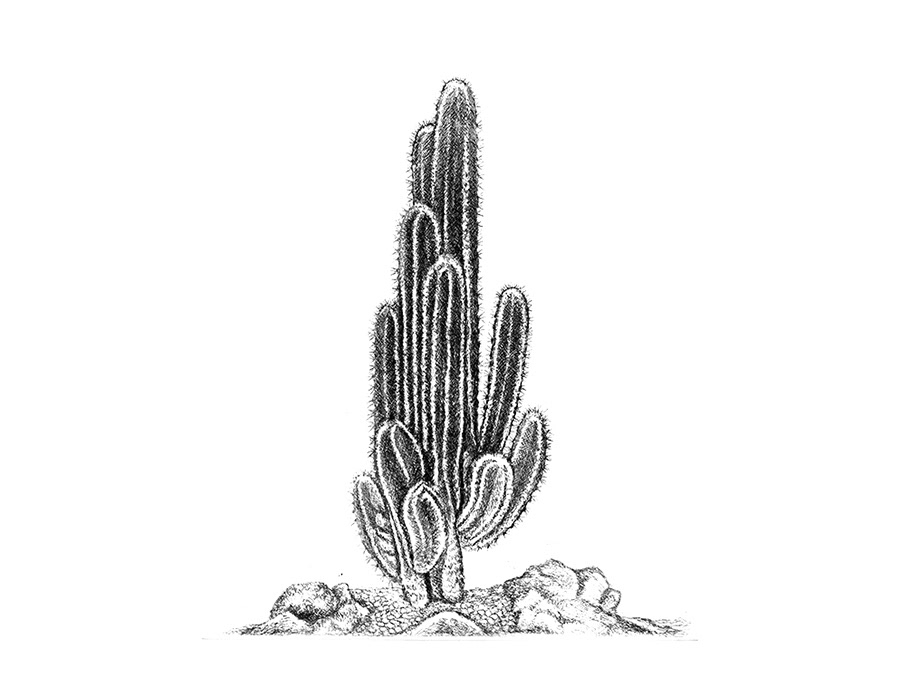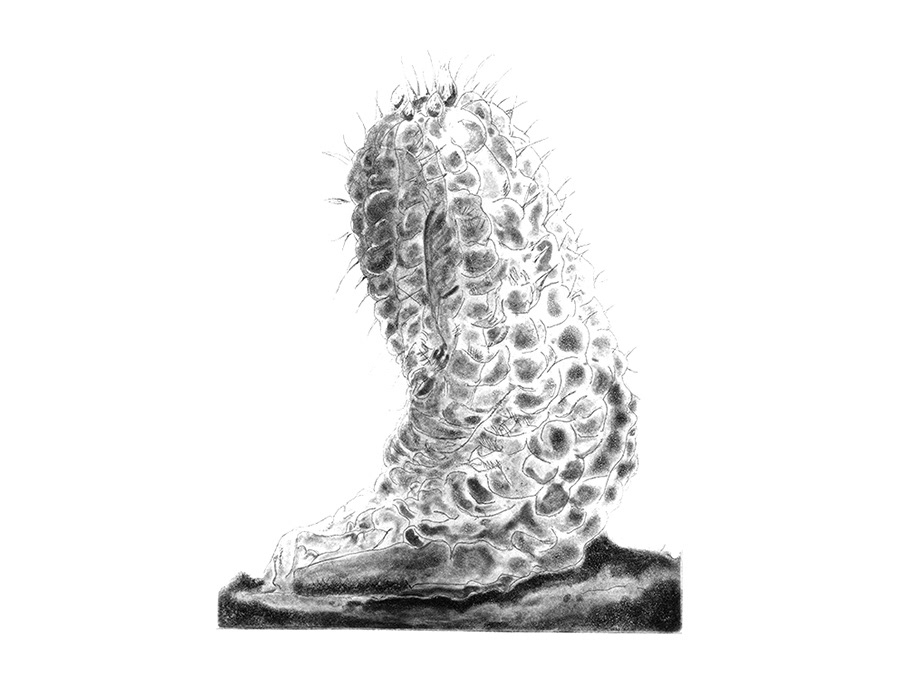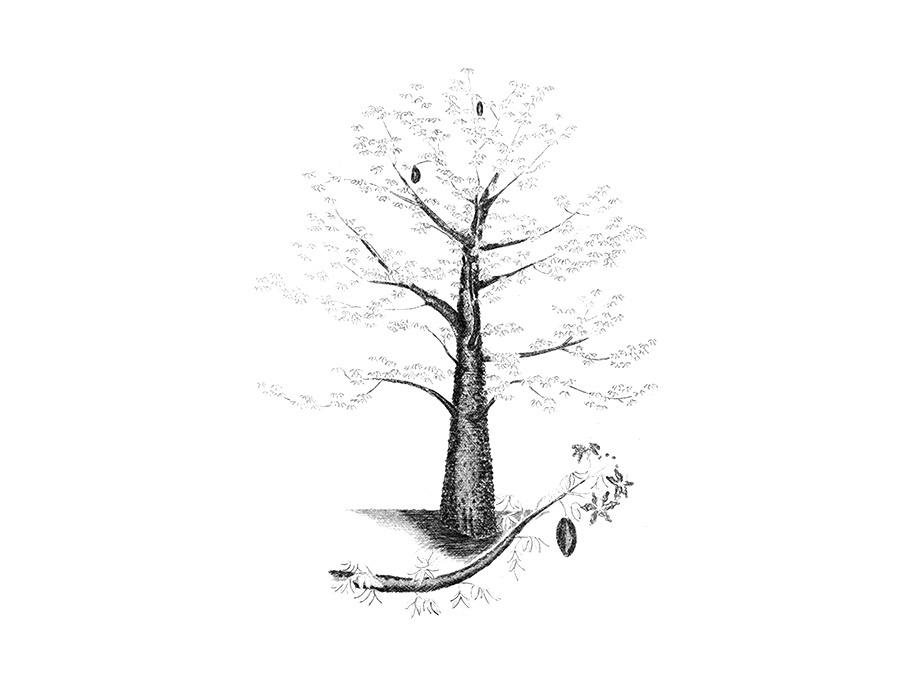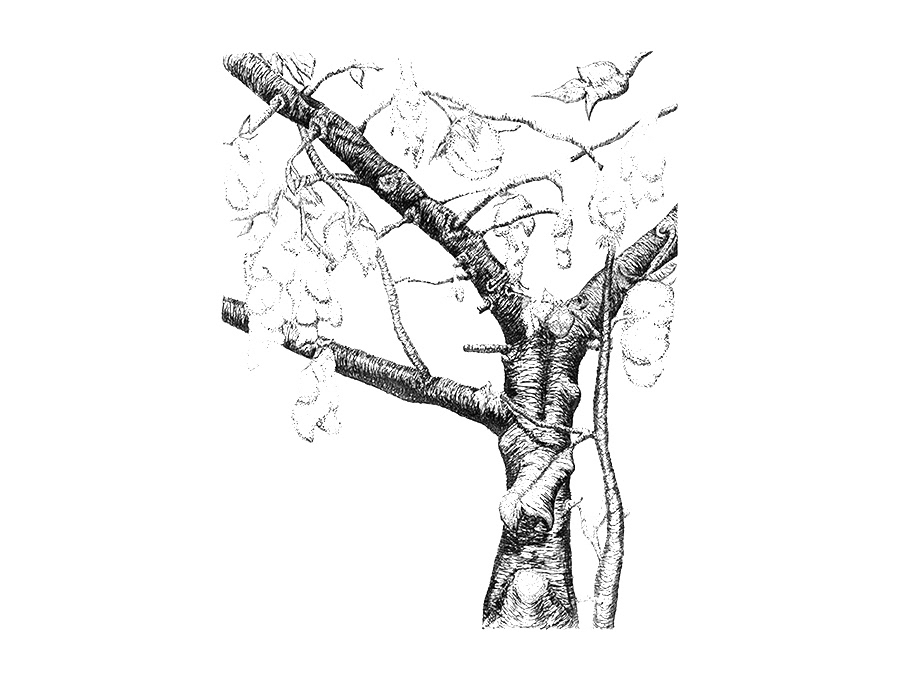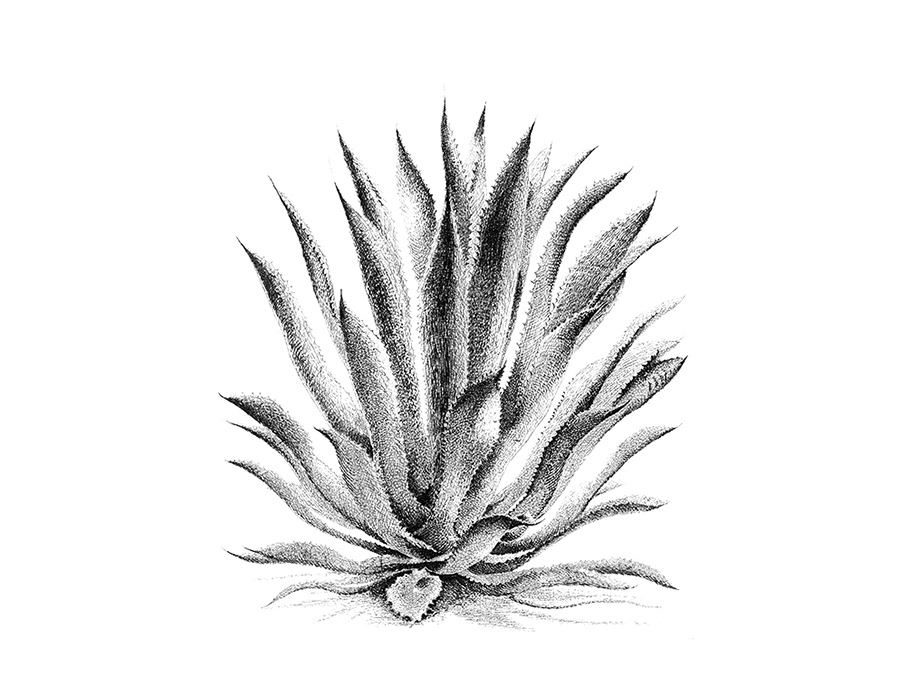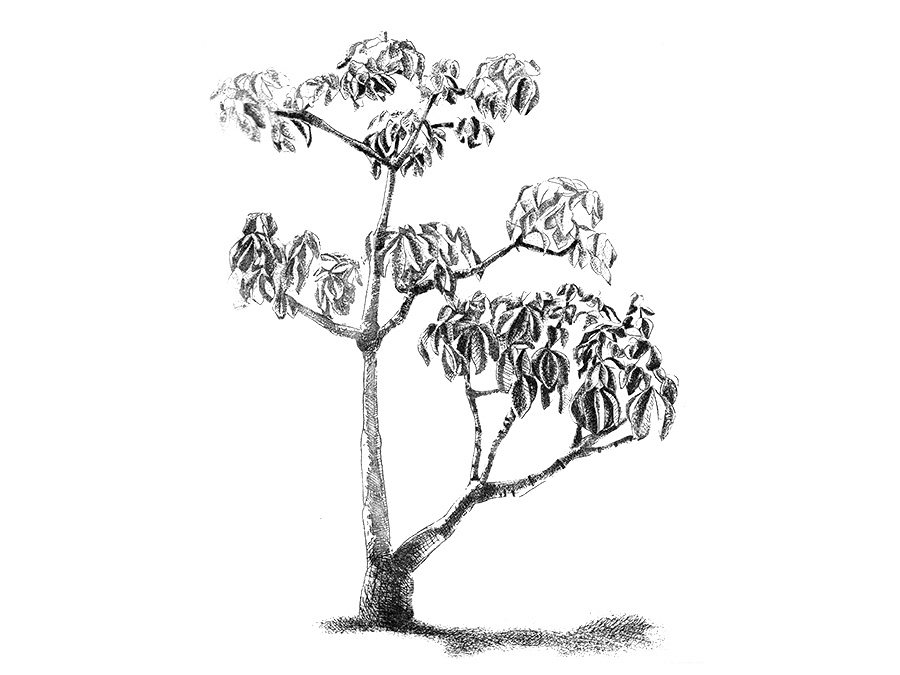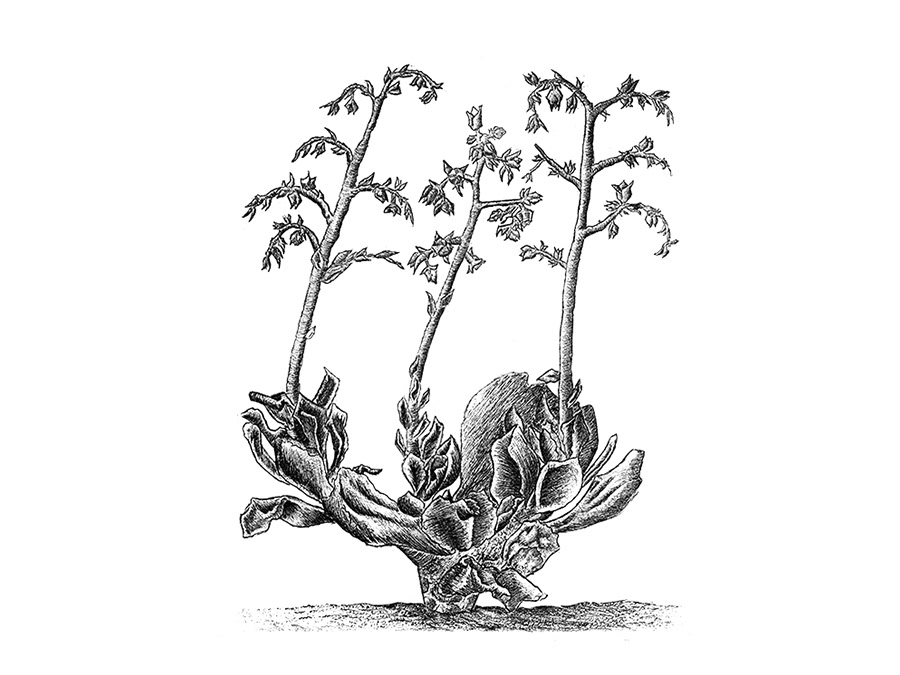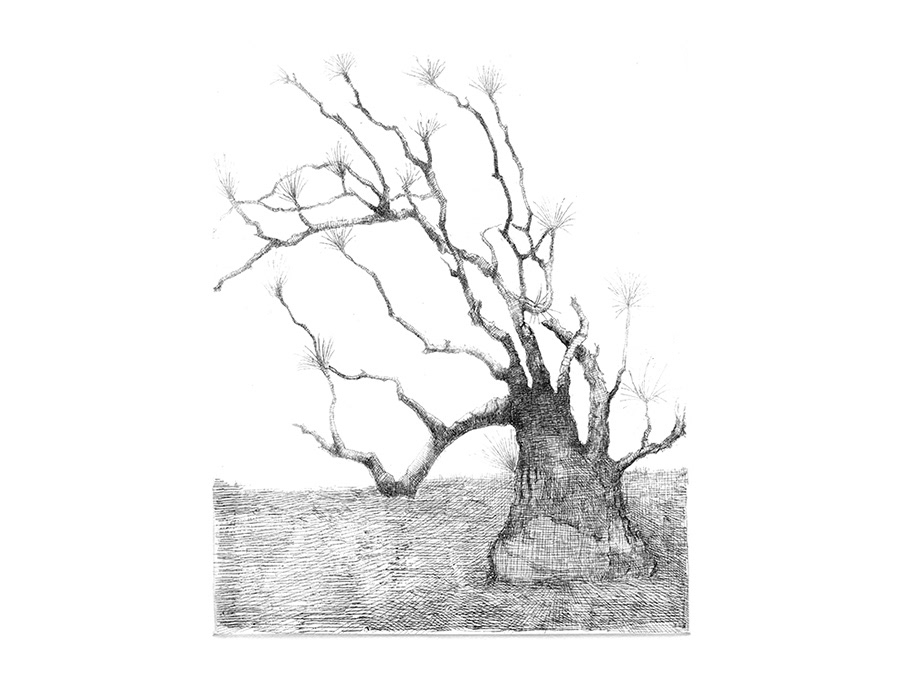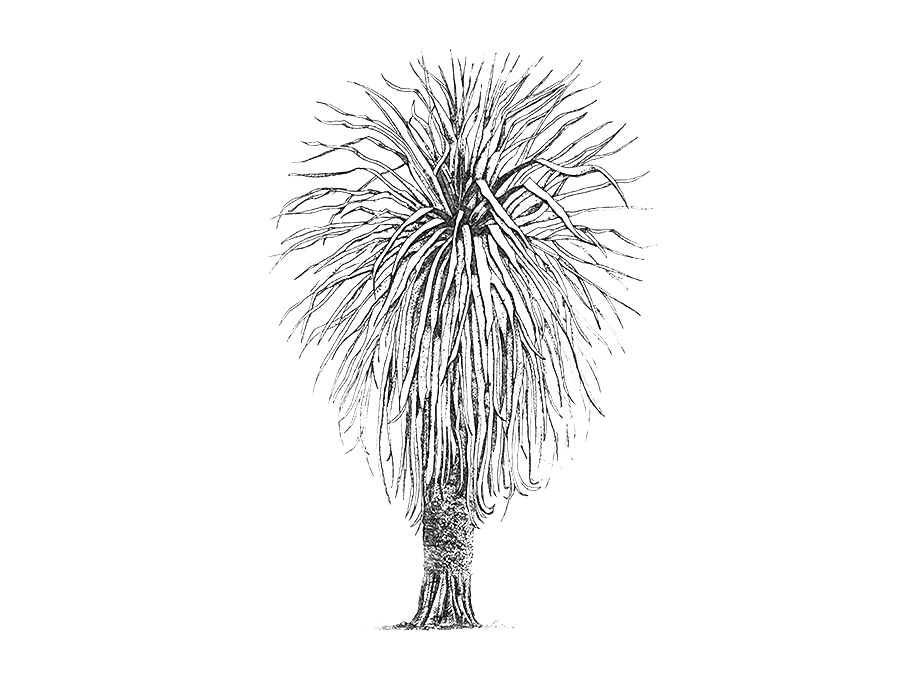Fouquieria purpusii
This extraordinary plant grows on limestone rocks in the district of Coixtlahuaca, in the ancient Chocholteca nation, in the northern region of the Mixteca Alta. The Fouquieriaceae family, which comprises eleven species within a single genus, is practically endemic to the arid areas of Mexico: only the ocotillo, Fouquieria splendens, crosses the border into Texas and Arizona. Four species grow in Oaxaca, where they find the southern limit of the family's distribution. Among them, F. purpusii is the rarest and most remarkable in appearance. It resembles its relative F. columnaris from Baja California, known in Spanish as 'cirio' and in English as the 'boojum tree' because it resembles a fantastic plant from "Alice in Wonderland." The abundant spines of this plant represent an independent development of defenses found in agaves, cacti, and other plant groups in dry ecosystems. They exemplify convergent evolution in unrelated families. By reducing their photosynthetic surface to prevent water loss through evaporation, plants value the tissues where solar energy is converted into chemical energy, and they better protect these tissues from herbivores. Under such circumstances, natural selection favors the growth of spines. Natural selection favors the growth of spines under such circumstances. Alongside them, Fouquieriaceae have small leaves that emerge with the rains and are shed at the beginning of the dry season when photosynthesis continues in the green surfaces of the stem and branches. We have not recorded any traditional use of this species, but Fouquieria formosa was previously used for making fertilizer in some Zapotec communities, and F. cf. splendens is planted as a living fence in dry areas of the Oaxaca Valley and the Sierra Sur. F. purpusii, which has drawn significant attention from horticulturists and collectors visiting the Garden, is included in the official NOM-059-ECOL-2001 in the category P*, designating endangered endemic species; it is illegal to extract it from its habitat. Bibliography: • Ezcurra, Exequiel, and Rosa Linda Medina L. 1997 Fouquieriaceae D.C. Flora of the Tehuacán-Cuicatlán Valley, Fascicle 18. Institute of Biology, UNAM, Mexico City, Mexico. • Secretaría de Medio Ambiente y Recursos Naturales 2002 Official Mexican Standard NOM-059-ECOL-2001. Official Gazette of the Federation, March 6, 2002, Second Section, pages 1-80.
You may also like
